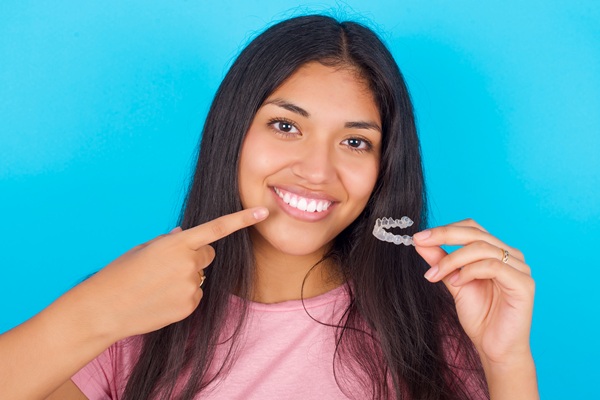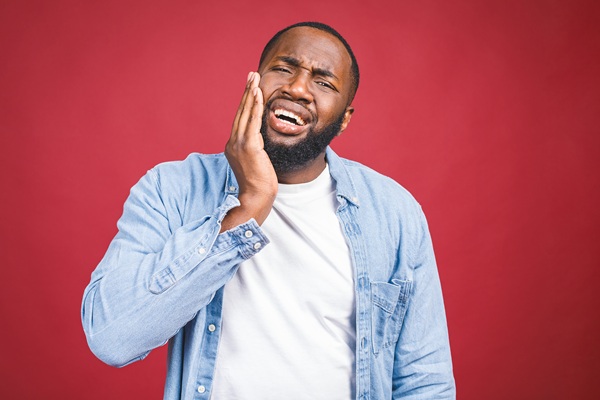Average Length of Time for Invisalign Treatment

Invisalign® is an effective, comfortable and popular alternative to braces for delivering a gorgeous smile. Instead of requiring long-term affixation as braces do, these custom trays are removable. Individual follow-up visits do not take long at the dentist’s office, and the results after treatment are undeniable.
What Invisalign® treatments are like
Invisalign® trays are designed digitally based on careful analysis of the patient’s mouth. Each tray features minor adjustments in tooth alignment that gradually help mold teeth into the desired smile. Liners are changed every one or two weeks as teeth move into proper alignment.
What to expect on the initial visit
The first visit gives dentists the opportunity to speak with patients and determine the goal of treatment. This visit is also the time to perform a digital mapping of the patient’s mouth, including current tooth position and bone structure. Dental professionals use digital x-rays, photographs and dental molds to build a precise 3-D impression of the mouth. This helps them to design a treatment plan that is used to create unique Invisalign® trays for each step of the alignment process.
Wearing Invisalign® trays during the day
It is recommended that patients wear liners for approximately 20-22 hours a day. This helps teeth move in the correct direction as quickly and consistently as possible. The liners are made from a special type of clear thermoplastic that is designed to be practically invisible during the day.
Patients can remove the trays easily to eat meals and drink any beverages without problems. Trays can also be removed before brushing or flossing. Even though they are designed to be worn all day long and during sleep, Invisalign® liners are specifically crafted to provide a comfortable fit.
How follow-up visits work
Dentists schedule follow-up appointments approximately every four to six weeks. This gives them the opportunity to make sure that the process is progressing correctly, as well as to answer any patient concerns or help make the experience even more comfortable.
How long most patients need to continue Invisalign® treatments
The average time that the patient has to continue treatment is from 12-18 months. However, total treatment time varies significantly since no two smiles are exactly the same. When only minor corrections to overbite, underbite or gaps are required, the desired results may appear within six months. When more extensive alignment issues are present, patients may need liners for a longer period.
Dentists inform patients of the estimated time required for alignment changes during the first visit, but final results can depend on several factors:
- How closely the dentist’s instructions are followed
- Whether patients wear the liners 20-22 hours daily
- How complex the original issues were
Small changes are often noticeable within the first two-week period, and by the end treatment, the difference is amazing. Of course, with severe misalignment problems, some patients may require traditional braces instead. These factors are taken into account during the initial consultation.
Conclusion
Invisalign® liners are an excellent option for crafting the beautiful smile of your dreams. They are more comfortable than traditional metal braces and deliver noticeable results in a short time. It is easy for many patients to switch aligners on their own, and dentists are available for assistance.
Request an appointment here: https://www.yourhuntsvilledentist.com or call René A. Talbot, DDS at (256) 382-6690 for an appointment in our Huntsville office.
Check out what others are saying about our services on Yelp: Read our Yelp reviews.
Recent Posts
Orthodontics is a branch of dentistry that focuses on teeth straightening options such as Invisalign®. However, because having straight teeth is so important to oral health, many types of dentists offer orthodontic services, including general dentists. Read on to learn more about the benefits of Invisalign.Like other clear aligners, Invisalign falls under the category of orthodontic…
Knowing when you need an emergency dentist can help save teeth, preserve oral health, and prevent serious complications. From sudden tooth pain to dental trauma, understanding the signs that require immediate attention helps ensure timely and effective care. Learning more about the role of an emergency dentist can prepare patients to act quickly in critical…
Severe tooth decay or damage is often treatable through root canal therapy. Despite its reputation, undergoing a root canal is similar to filling a cavity and is generally no more uncomfortable. Learning about the procedure and the recovery process can help alleviate concerns, helping patients see the benefits of preserving their smile with a root…
Choosing the right kids' dentist is one of the most important decisions you will make for your child's oral and overall health. This dental professional specializes in providing dental care tailored to the unique needs of young patients, fostering a positive experience with dental care from a young age. Working with an experienced pediatric dentist…


